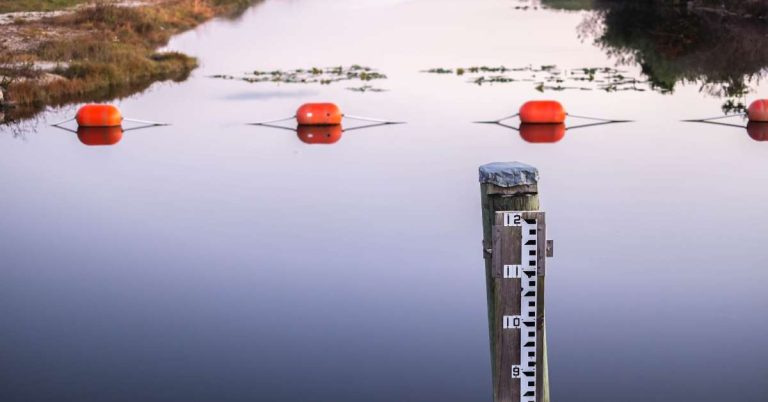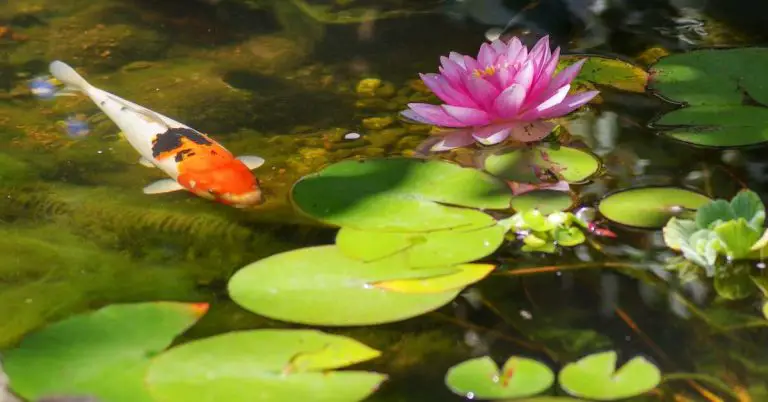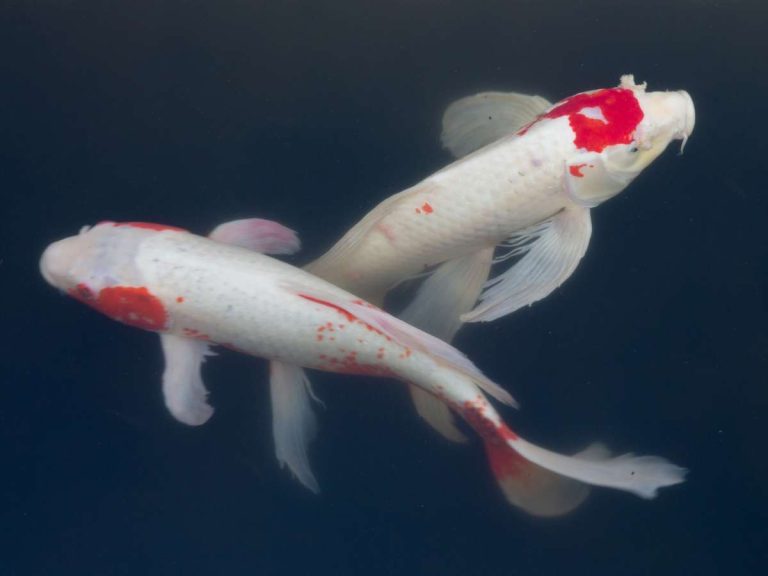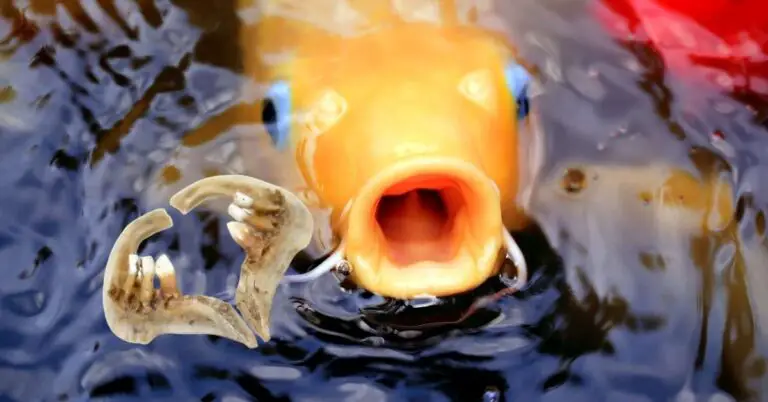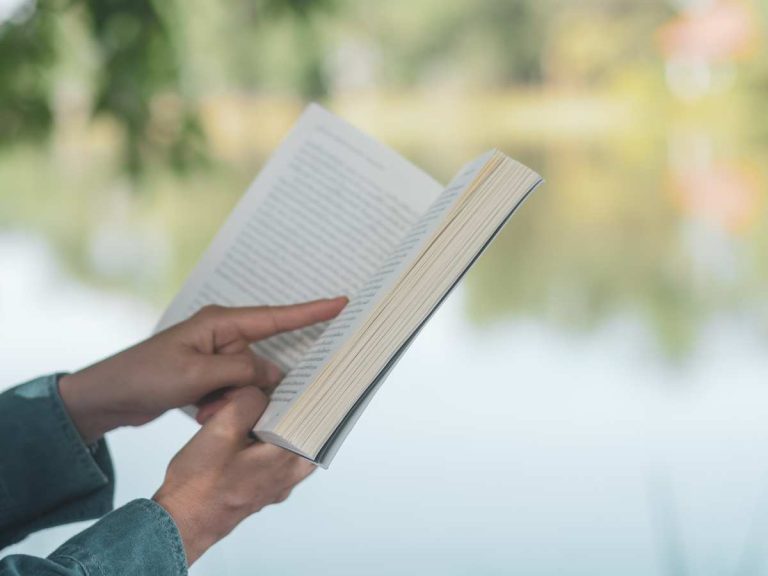How to Care for Koi Fish: Indoor Tanks & Backyard Ponds
Koi fish are a sight to behold, especially when properly cared for—probably the reason why they’re the most popular pet fish around the world. Their mesmerizing colors and quirky personalities make them a captivating addition to any home or garden. This is why people spend so much money buying Koi from local dealers as well as specialized online Koi farms.
But, caring for koi fish isn’t the same as taking care of an average goldfish. Koi require a spacious outdoor living space and meticulously maintained water to truly flourish.
This guide is designed to help new and experienced owners alike know exactly how to take care of their koi fish, whether it’s in an aquarium on a shelf, or a large backyard pond.
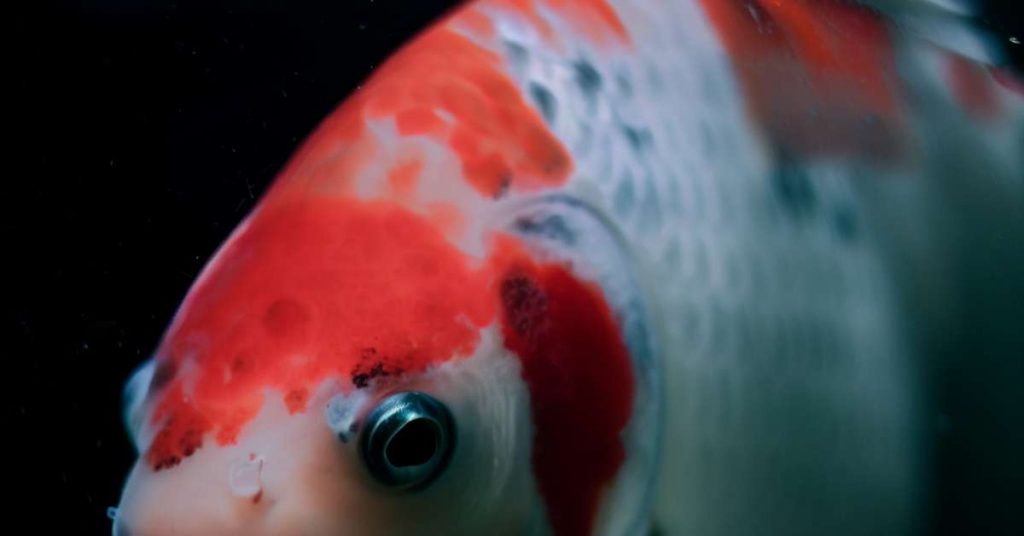
Related Post: Why Koi Fish Are Considered Lucky
How to Care for Koi Fish
| Parameter | Ideal Condition |
|---|---|
| Water Temperature | 68-77°F |
| pH Level | 6-9 |
| Tank Size | Minimum 250 gallons per fish |
| Water Change | 20% every 2-3 weeks |
| Filtration | Biological, mechanical, and chemical |
| Feeding | Mix of natural and commercial foods |
| Tank Cover | Necessary (netting or glass top) |
| Substrate | Gravel or rock, two inches deep |
Understanding Koi Fish
Koi fish, members of the Cyprinidae family, are essentially ornamental versions of the common carp. With the potential to reach lengths of up to 3 feet, they are among the largest fish you’ll find gracing backyard ponds.
Koi fish are typically a shimmering white or silver, adorned with iridescent scales and vibrant spots and markings. These markings can range from fiery red and gold to cool black and deep blue. The exact color and pattern of your koi will depend on its specific variety.
Koi Fish Behavior
Koi are peaceful creatures that form schools of anywhere between 5 and 15 individuals. They swim in beautifully synchronized formations, exploring every level of your pond. These active and free-swimming fish love to show off their vibrant colors at every opportunity.
When foraging, koi will dig and burrow into the sediment to uproot plants and snack on delicious seeds. This behavior makes them a joy to watch, but it also means that your pond needs to be well-stocked with suitable food sources.
Setting Up a Koi Pond
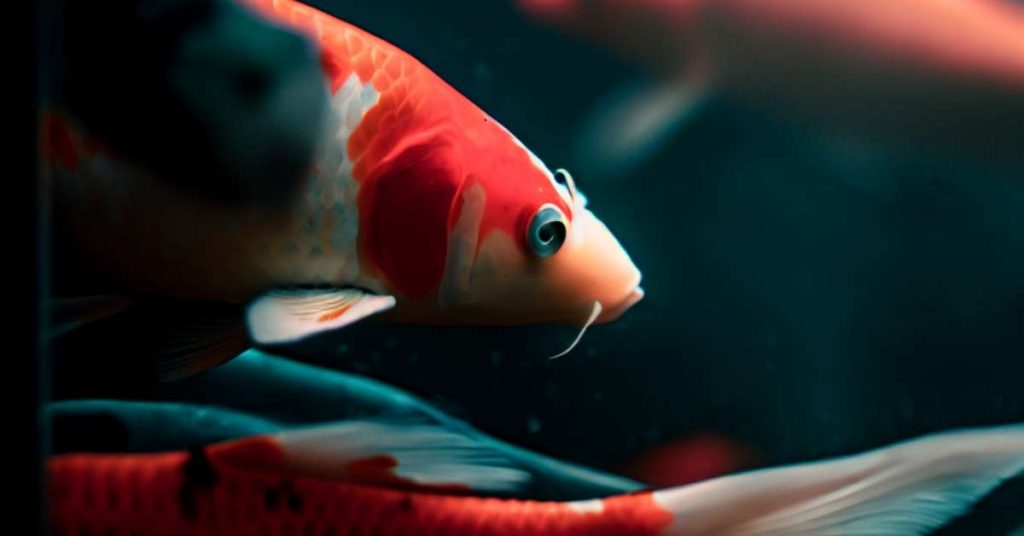
Pond Requirements
Koi fish require a large living area, with at least 250 gallons of water and a minimum depth of 6 feet. Your pond should have a temperature around 74-86°F throughout the year. A heating system is useful in the winter to prevent the water from freezing.
In general, the pH of your pond should be kept between 6-9. You can do this by using crushed limestone in your water. Your pond should be constructed from concrete, with a rubber lining and a muddy bottom substrate. Always make sure to check the pH of your pond regularly to make sure whatever you’re doing to maintain it is working.
Pond Setup
The ideal setup for Koi is a picturesque outdoor water garden, adorned with non-invasive plants. These plants will not disrupt your natural ecosystem. The best plants for a water garden include water hyacinth, water lilies, cattails, pickerels, floating pondweed, duckweed, and more.
Many koi keepers plant willows and other shady, trailing trees around their water garden. This provides extra shade and cover for your fish, and also enhances the aesthetic appeal of your pond.
Koi Fish Care
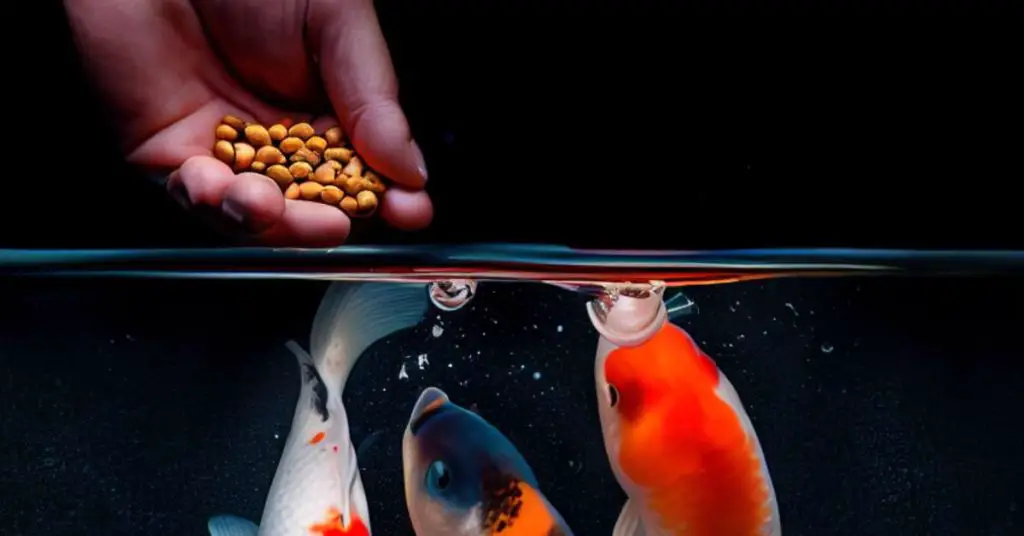
Feeding Koi Fish
Koi fish are omnivores, which means they’ll eat basically anything that can sustain them in your pond. They consume seeds, plant material, algae, zooplankton, and insects. That said, Koi don’t prey on other fish, but they may eat their eggs. In a well planned and maintained pond, your fish will find plenty of vegetation—and even some little critters to munch on.
To make sure your Koi are getting all the nutrients they need, provide them with a mix of natural and commercial foods. Koi will happily eat algae and aquatic plants, if that’s what’s available. Maintaining a good stock of algae and floating weeds in your pond is beneficial. This discourages them from uprooting the plants in your water garden.
Maintaining Water Quality
Maintaining the water quality in your koi pond is a crucial aspect of care and disease prevention. Regular cleaning of the pond and checking your filter every 2 to 4 weeks is essential. Koi fish have a high tolerance for poor water quality, but that doesn’t mean they thrive in it. Good water quality ensures your koi fish stay healthy and vibrant.
Disease Prevention
Just like humans, koi are susceptible to viral infections. The most common viral infections comes in the form of herpes that only affects koi and other carp known as “Koi Herpes Virus”, or KHV. Just like the human form of herpes, KHV is highly contagious and spreads quickly from one koi to another.
Because of these risks, I recommend that any new Koi you bring home should be quarantined for up to 2 weeks before you place them anywhere near your other fish. It might seem like a pain, but if it saves the lives of your koi it’s worth the effort.
How to Care for a Koi in an Indoor Aquarium
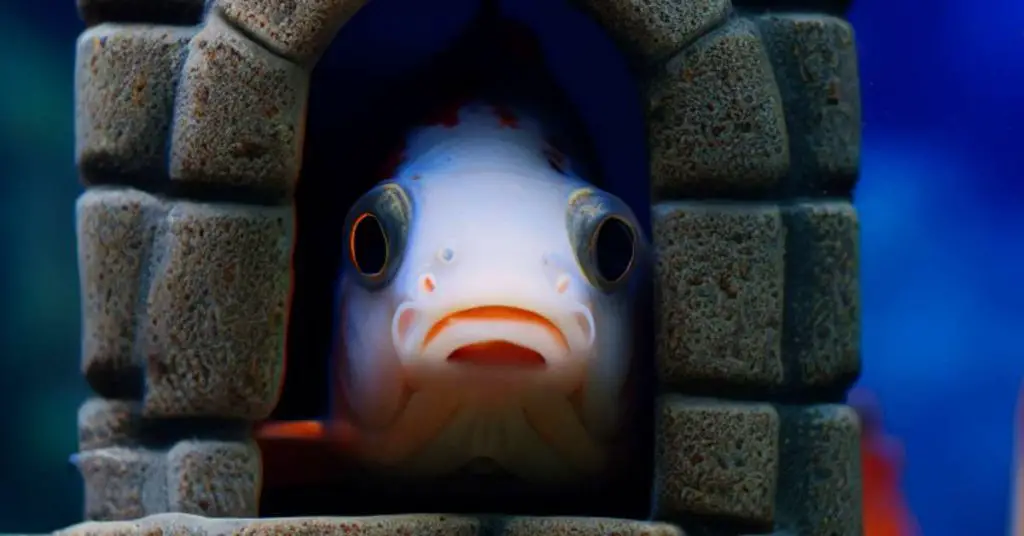
Caring for koi fish within the confines of an indoor aquarium demands a unique set of considerations, distinct from those of an outdoor pond. Koi, being resilient creatures, can adapt to a variety of environments, including indoor tanks. However, there are specific factors to consider when creating an indoor habitat for your koi.
Balance Your Koi Population
If you’re planning an indoor koi habitat, one of the main things you need to be concerned with is space and overcrowding.
An overcrowded koi tank will negatively affect the health and happiness of all the creatures that live in it. Considering that most indoor setups are significantly smaller than an outdoor pond, you really need to keep a ratio of 100 gallons of water for every 12-inch koi you have.
This is especially important to keep in mind because koi grow really fast, so if you don’t plan properly you’ll either need to remove a few koi or get a bigger tank as they continue to grow.
Maintain Pristine Water Conditions
Just as with an outdoor pond, maintaining high-quality water is crucial for the health of your indoor koi. Conditioning the tank by dechlorinating the water and removing heavy metals is a recommended step before introducing your koi, as they are sensitive to these elements.
A high-quality pump is essential to ensure proper aeration and maintain an adequate level of dissolved oxygen. Regular water changes are also vital. Aim to change up to 20% of the tank’s water every 2-3 weeks to maintain water purity. This new water should also be treated before being added to the tank to minimize stress on the koi.
Keep the Temperature and pH in Balance
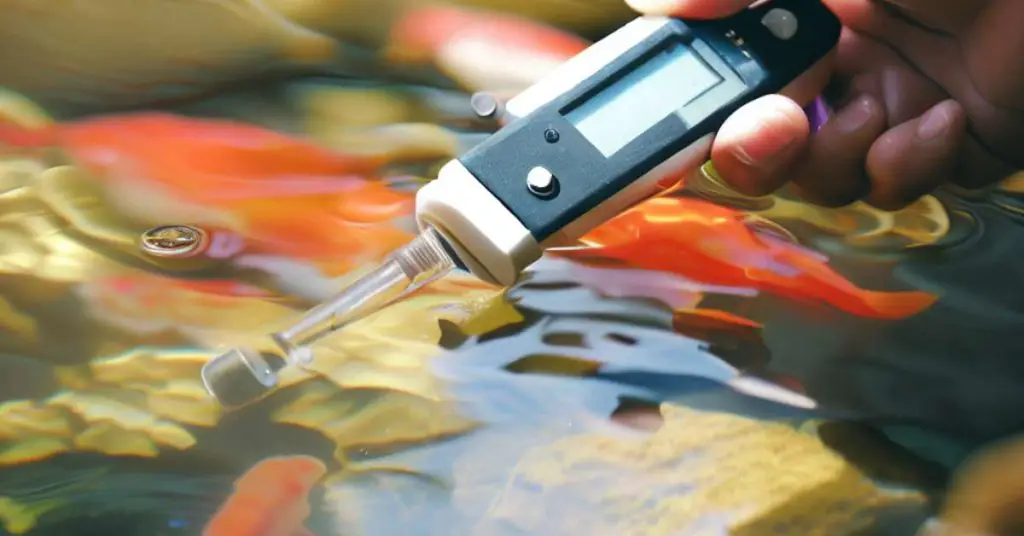
It’s crucial to constantly monitor the temperature and pH levels of your tank—keep the temperature between 68-77°F and the water at the ideal pH level for Koi between 7.0 and 7.5. This will ensure your fish stay happy and healthy in their habitat.
That said, Koi fish in indoor aquariums will still require a balanced diet of commercial and natural foods. Regular water changes and tank cleaning are crucial to maintaining water quality. It’s also important to provide plenty of hiding spots and decorations for your koi to explore.
Always Remember Filtration
The significance of filtration cannot be overstated. Koi produce a substantial amount of waste, which can quickly degrade water quality and visibility. Implementing biological, mechanical, and chemical filtration is crucial to creating the ideal environment for your koi.
An external mechanical filter, supplemented with activated carbon for chemical filtration, can help remove dissolved biological waste. A bottom filter, situated beneath your chosen substrate, will handle the majority of other waste. Be prepared for weekly cleaning sessions.
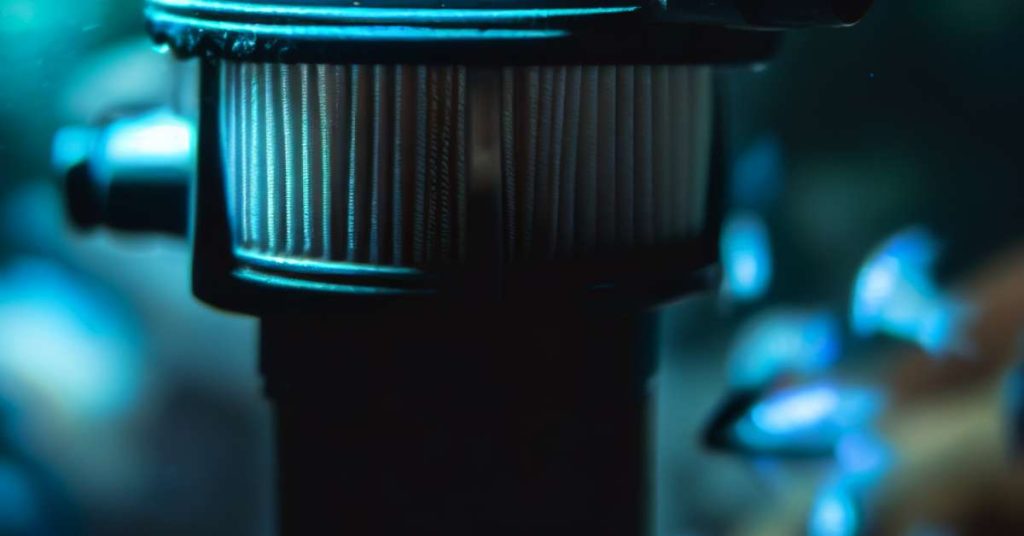
Other Considerations
The placement of your tank is also important. It should be situated in a well-lit area, but not exposed to direct sunlight. Given that koi are adept jumpers, a cover for your tank is necessary. You can use netting or a glass top. Temperature regulation is also crucial. While koi can tolerate a wide range of temperatures, a heater can help maintain the preferred range of 68-77°F.
Lastly, koi are natural sifters, so a substrate of gravel or rocks of varying sizes, at least two inches deep, over your filter will be a welcome addition. However, be cautious with live plants. Koi have a penchant for nibbling on them, and they may not survive for long. Artificial plants might be a more durable option.
Breeding Koi Fish
Breeding Koi fish requires a separate pond for mating and spawning. It can be done naturally or induced through artificial means such as hormone injections. The fish reach sexual maturity between 2 and 5 years old, and natural breeding will occur in the springtime. In a breeding pond, there should be 2-3 males for every female. Larger, older females are the best spawners.
To encourage natural breeding conditions, keep your breeding pond at temperatures between 64-72°F. They should be fed food high in protein and include both natural and commercial foods, up to 3 times a day.
Female koi generally lay their eggs in shallow-water vegetation, and males will fertilize them once they’re laid. When the eggs are fertilized, you need to remove them and place them in an incubation tank, where they’ll hatch in 3-4 days.
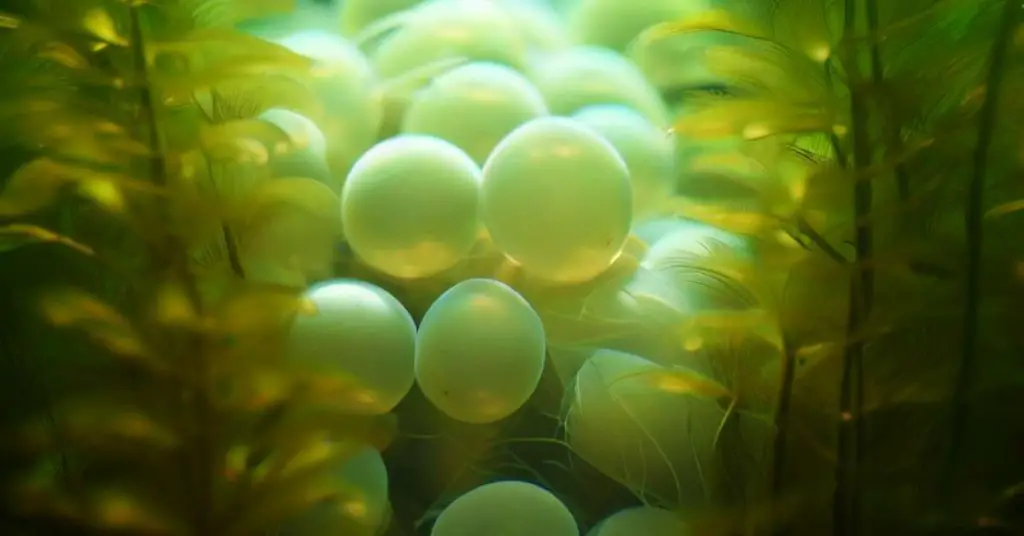
Final Thoughts
Caring for koi fish, whether in a backyard pond or an indoor aquarium, is a rewarding experience. These beautiful, vibrant creatures bring life and color to any setting. With the proper care and attention, I’m confident your koi fish can live a long, healthy life.
Remember, the key to successful koi keeping is a clean, spacious environment, a balanced diet, and regular maintenance. Good luck!

